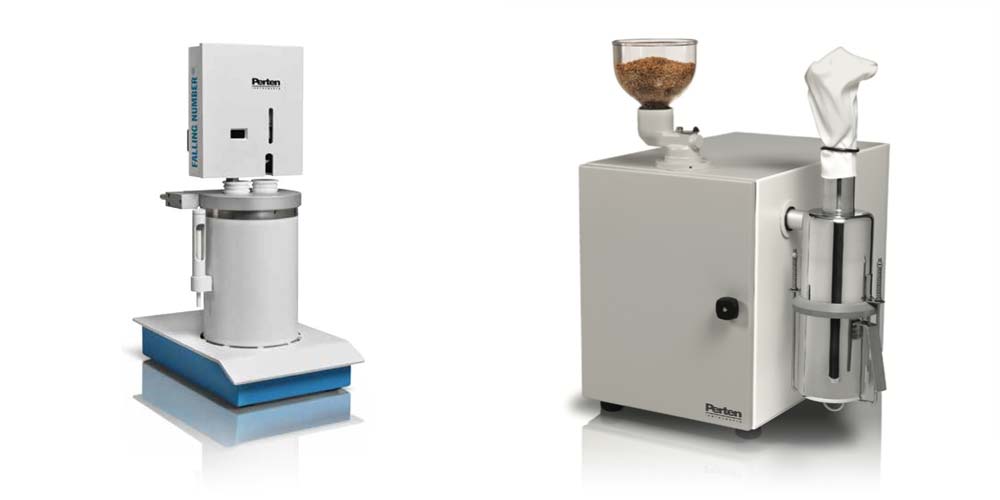Falling Number Grain & Flour testing
The Hagberg Falling Number (HFN) is a term that is used to give an indication of the enzyme activity in flour. It was developed in Sweden originally, and it is used to describe the number of seconds it takes for a plunger to fall through a mix of wheat flour in water. If the plunger falls quickly, it means that the starch has been converted to sugar. However, if the plunger falls slowly, the mixture is thick with starch.
The Falling Number 1310 system measures the alpha-amylase enzyme activity to detect sprout damage. The industry standard falling number 1310 method uses a single stirrer analysis for fast operation.
The Hagberg falling number test is used to assess the following:
- Upgrades/establishment of specification for flours at receipt, for example, enzymatic activity and starch damage
- Machinability and dough-handling problems during processing
- Its effect on water absorption (water binding capacity)
- Crop-year changeovers and selection of wheat flour suppliers
- Enzymatic activity in wheat flour
- Sprout damage in wheat kernels
Lab Mill
The Lab Mill 3100 is a hammer mill suitable for grinding grains, beans, corn and other products. The Lab Mill grinds the product down to a fine powder and can be used for Mycotoxin and Falling Number sample preparation.
By using a Lab Mill you can reduce sampling errors when testing and fulfil the Falling Number requirements easily.
Contact us today or call 01785 282255 for more information.

